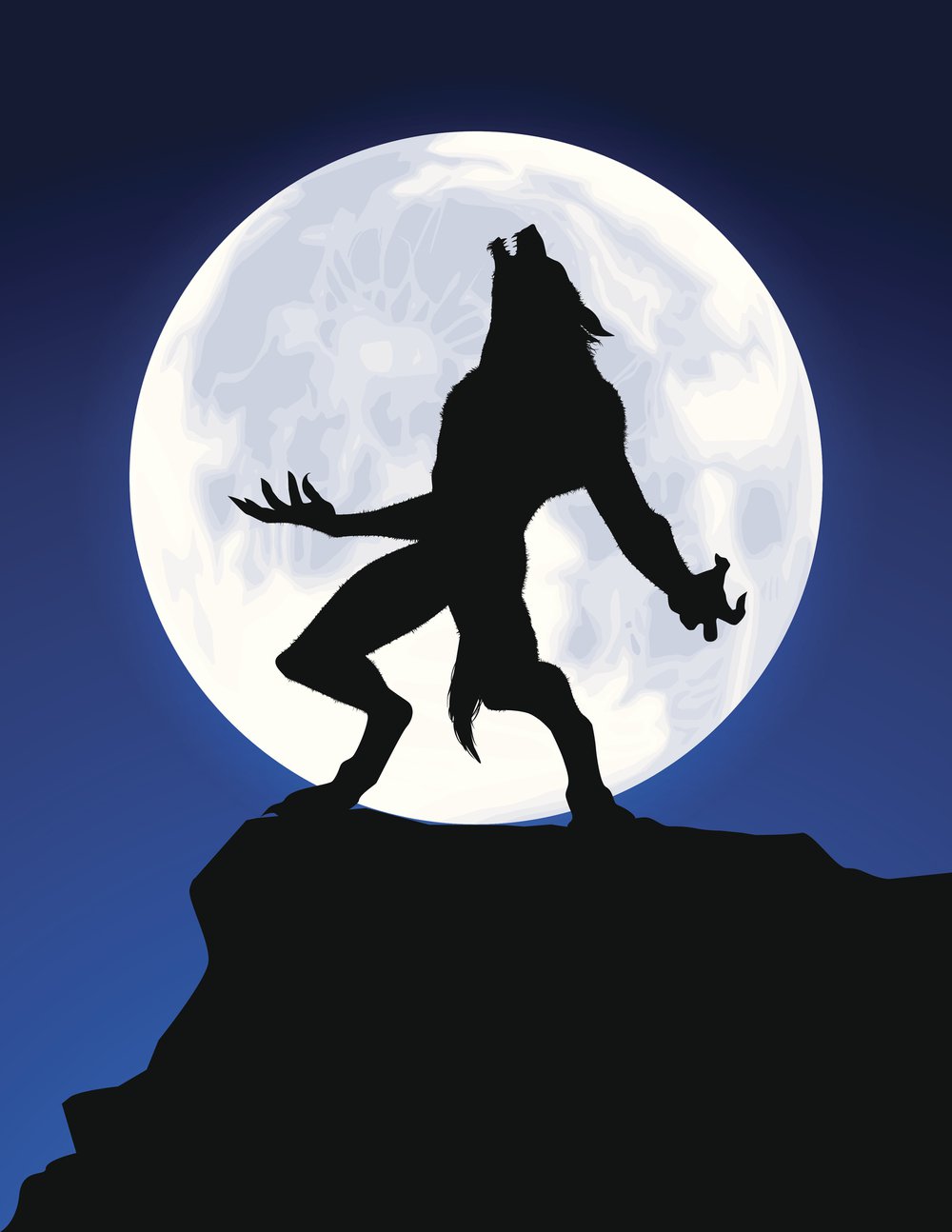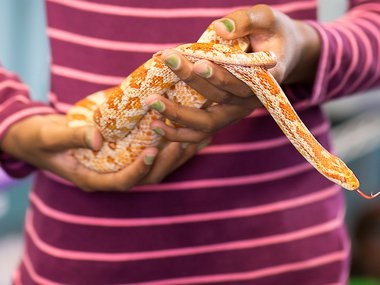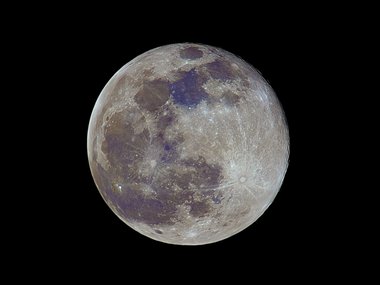Horror movies are full of ghouls, goblins and monsters. Lots of adults spend the weeks leading up to Halloween watching the scary films. There’s even a slew of flicks for kids that feature slightly less terrifying, but equally fictitious beasts, hobgoblins and witches (“Hocus Pocus” anyone?!). For Science on Tap: Fright Night, our resident historian James Blow gave guests the rundown on some popular creepy characters. Here’s that historical research, as well as some modern science related to each.
But before we jump into that, let’s set the stage and start with fear. Do you love a good scare? Whether you answered yes or no, most of us actually do. But what we consider a “good” scare can be very different depending on our physiology and experiences. Dr. Catherine Franssen took a look at the science of how fear works to get us in the right frame of mind for talking Frankenstein, werewolves, mermaids, zombies and vampires.
Frankenstein’s Monster
In 1816, Mary Shelley and her future husband Percy along with their friend the infamous Lord Byron decided to have a writing contest to see who could come up with the scariest story. Mary came up with a story that would eventually be published as Frankenstein: or The Modern Prometheus in 1818.
The story was about a man of science who pushes his pursuit of knowledge too far, and creates a creature he immediately hates as soon as it comes to life. Angered by Frankenstein’s rejection, the creature systematically takes revenge on his creator. Though it seems like science fiction, and some argue it is the first science fiction story, there were some real-world things going on at the time that may have made it seems less so.
In 1803, a scientist name Giovanni Aldini performed a strange experiment on the corpse of an executed murderer named George Foster. By applying electrical wires to various points on the body, Aldini made the corpse’s features contort and caused it to twitch and move its limbs. Aldini was demonstrating galvanism, named after his uncle Luigi Galvani, who had pioneered these experiments using frogs and other animals.
It is important to note that Aldini apparently did not intend to try to bring the corpse back to life, but there were many in the general public who apparently thought it possible, including Mary Shelley. Though she only mentions galvanism once when writing Frankenstein, and the use of electricity to bring the creature to life was only added in later adaptations of her work, she writes in the foreword to the 1831 edition of Frankenstein that is was one of her inspirations when writing it.
Remember also that Dr. Frankenstein obtained the material to build his creature from dissecting rooms. There is also an extra creepy angle here, because in Britain at the time Mary Shelley was writing there was no legal way to obtain corpses to teach medicine except for the bodies of executed criminals. Even in those days, there were hardly enough corpses to be had from the gallows, so it was very common for bodies to be stolen from cemeteries for dissection. Dr. Frankenstein would have gotten his parts by exactly the same means. People at the time were terrified of having their bodies stolen after death, and body-snatching became a horror trope on its own. Today, although there have been countless adaptations of the original story, the most enduring and recognizable image of the iconic creature is from the classic 1931 film Frankenstein, starring Boris Karloff as the creature.
Bodies made of various man-made parts doesn’t seem as creepy now as it may have nearly 200 years ago. Today we know body parts can be 3D printed, including part of a skull! In addition to bio-printed organs, there’s wearable technology devices that function like organs when those organs aren’t working correctly. Perhaps Shelley was more ahead of her time than we give her credit for. But, to be clear, people with Type 1 diabetes probably wouldn’t appreciate being compared to Frankenstein’s monster!
Also, speaking of dissections, if you’re interested in watching a dissection, check out the Museum’s cow eye dissection demo.
Vampires
Blood has always had a sort of mystical power, and ever since the beginning of history it’s been used for medical or magical purposes. Blood sacrifices, animal and human, were often thought to be extraordinarily powerful. So, too, there have also been myths of creatures that fed on the blood of the living to steal their life energy in cultures around the world.
Though the legends have existed for centuries under many names, the term “vampire” does not appear to come into wide use until the 18th century, when there were mass vampire panics like ones that swept New England in the 18th and 19th centuries. These panics correspond with outbreaks of tuberculosis, also called “consumption,” because it caused sufferers to waste away and develop a wracking cough which frequently made people cough up blood.
Since the true cause of the disease was not known, people believed that their relatives were being victimized by vampires, and set out to find and destroy the creatures responsible. Graves from the time period have been found in Rhode Island, Vermont, and elsewhere that show evidence that the bodies were dug up, and if anything suspect were found the corpse, would be dismembered or otherwise tampered with to prevent the “vampire” from returning.
Since there was not a great deal of knowledge about how the decomposition process worked, a suspicious corpse could appear to have longer hair and nails as well as longer teeth. There could be blood around the mouth and the abdomen could appear full, as if the person had eaten recently. All of these are due to normal post-mortem processes, but at the time it could easily have appeared that the person had returned to life to victimize the living.
Though the most influential vampire novel of all time, Dracula by Bram Stoker, would not be published until 1896, there were vampire stories published prior to that time, which in addition to the centuries of folk tales, may or may not have helped to fuel the hysteria. In any case, there were other diseases that could also be attributed to vampirism, such as rabies or porphyria, a disease that cause skin symptoms as a result of sensitivity to sunlight.
Final fun fact, though the enduring portrayal of the dapper Count Dracula by Bela Lugosi in the eponymous 1931 film is the classic image of the character, he did not wear fangs for the part. The popular trope of Dracula sporting fangs was most likely popularized by Christopher Lee’s many portrayals of the Count in the 1950s and 60s. Since Christopher Lee, the fangs have been here to stay!
There are lots of modern science discoveries that relate to the story of vampires, but in keeping with the topic of teeth, two years ago we reported on research dealing with dental issues of people who lived long before Dracula … 2.5 million years ago in fact! And since the vampire fangs are supposedly used to suck blood, let’s talk about heme. Heme is a component of hemoglobin, the protein in red blood cells that carries oxygen from your lungs to all parts of your body. Heme is also the secret to the Impossible Burger's success as it provides the flavors we associate with meat.
Lastly on the list of modern science connections to vampires, perhaps the pale creatures just needed some more vitamin D, a.k.a. the sunshine vitamin! Not really a vitamin at all, this hormone plays a big role in keeping our immune system top notch. But, if you want some extra coverage just to be safe, here’s a recipe for sautéed collards with garlic to help you ward off potential blood suckers.

Image credit: Getty Images
Mermaids
Perhaps you wouldn’t normally think of a mermaid as a monster, especially if you’re familiar with the Disney version, but that’s largely a modern perspective. If you’ve read the original The Little Mermaid by Hans Christian Anderson, you know the original story is much darker than the modern cartoon version, and might even be considered nightmare inducing in some places. But myths of people that were half human and half fish are another story as old as history, going back to ancient times.
While it’s true that there are legends that portray mermaids as helpful toward humans, very often mermaids were thought to be dangerous to sailors and ships. Mermaids could enchant a crew and lure a ship to its doom. Though the sirens from the epic poem The Odyssey were not originally mermaids, over time the story changed slightly so that the irresistible singing that tortured Odysseus came from beautiful women that were half fish instead of half bird.
The trope of the mermaid as a bewitching and dangerous creature has been portrayed in modern entertainment like the film The Lighthouse with Willem Dafoe and Robert Pattinson, and more recently in the Hulu series Monsterland. Many sailors even into modern times have claimed sightings of mermaids, including Christopher Columbus, who reported seeing them on a Caribbean voyage. Most likely nearly all sightings of mermaids are actually misidentified aquatic mammals, such as dugongs and manatees, gentle and curious animals both belonging to the taxonomic order Sirenia, which seems to address their tendency to be confused with mermaids.
As is nearly always the case, humans are a far greater danger to the mistaken mermaids than they are to us. Manatees and dugongs are frequently injured by boats, as their curious nature tends to draw them too close to human activity. Humans are also contributing to disrupted marine life habitats, through trash and plastic waste in waterways.
Fact or fiction, mermaids or manatees, there’s no doubt water-dwelling creates are impacted by the changing climate, which is resulting in slower hurricanes, migrating trees, changes to the pollen season, dating, diminishing pumpkin supply and (back to the topic of water) sharks!
Speaking of sharks: the idea of mermaids being two things (fish and human) reminds us of a recent news story about two things. Well, it was actually one thing with two heads. A two-headed shark was recently discovered off the coast of India. While that might seem like it deserves a spot on the Halloween Monsters list, this shark was real and it is a small species generally harmless to humans.
Of course, as we’ve told you before, the number of species that scientists think are left to be discovered is around 8.7 million (give or take about a million). Perhaps mermaids are one of those species!
Zombies
The shambling, moaning, flesh eating zombies of The Walking Dead and other modern fiction owe their existence to the classic 1968 George A. Romero film Night of the Living Dead. It is worth noting that the word “zombie” does not appear anywhere in the film; this was applied later by fans.
Zombie is actually a term taken from Haitian folklore, and refers to a person who has been deliberately put into a state of near-death, and then revived in a mindless, subservient state where they are made to serve their creator. Stories of Haitian zombies probably first reached the United States when service members returned from the occupation from 1915-1934, and quickly became a trope in popular culture.
Before we go any further, forget everything that you have ever seen in the movies about Voodoo. Hollywood and popular culture has not been particularly respectful or accurate when depicting a legitimate religious faith that was derived from the intersection of the folk religions of West Africa and Roman Catholicism. This rich and complicated religious tradition is widely practiced in Haiti and has spread to other places such as New Orleans.
In the Voodoo faith, a person can be made into a zombie through various means, usually through magic, and they are subservient to its creator until that person dies. There are accounts of people thought to have died, only to return to their family years or even decades afterward. One method is using “zombie powder,” which is rumored to contain ingredients like tetrodotoxin from blowfish poison. The powder can induce a catatonic state that could be mistaken for death.
This phenomenon has been investigated by scholars, including prominent African-American anthropologist Zora Neale Hurston, who visited Haiti in the 1930s to document Voodoo rituals. Still, no conclusive evidence has been produced to this point. However, the fear of being turned into a zombie as well as other aspects of Voodoo was fully exploited by Francois “Papa Doc” Duvalier during his dictatorial reign from 1957-1971.
Papa Doc adopted the imagery and practices of Voodoo tradition and twisted it to terrorize and control the Haitian people, even dressing in a black suit and hat to match traditional depictions of Baron Samedi, a powerful spirit of the dead. Even worse, his paramilitary enforcers, the Tonton Macoute, had free rein to brutally suppress dissent by any means necessary, including using the threat of turning enemies of Papa Doc into zombies. It was even thought that the Tonton Macoute themselves were zombies under Papa Doc’s control. As with many zombie stories, this real-life horror story maintains the trope that the dark side of human nature is a far greater threat than the undead.
While there isn’t a lot of science to back up the idea of zombies, there is the idea of de-extinction. Yep, we’re talking “Jurassic Park” plotlines here. But it’s not movie 63 in the series or anything: Russian and Korean scientists have started to work on the concept of using mammoth DNA and fostering a birth through an elephant mother.
But, if you don’t want to think about the idea of bringing back the dead, why not focus instead on the decomposition process. Letting food scraps decompose is a completely natural process that leads nutrient-rich soil. Yes, we’re talking about backyard composting. Instead of being scared of rot and decay as it relates to Zombies, turn that into an opportunity to decrease the amount of material in landfills that’s releasing methane.
Werewolves
Once again, myths about people who can transform into animals have a long history. One of the earliest known examples is Enkidu from the Epic of Gilgamesh, who is referred to as a “wild man” who was extremely hairy and lived with beasts in the wilderness.
Many cultures all over the world all have stories about humans who can take the shape of various animals including wolves, and there are many regional variations on the basic theme. Someone might transform through use of magic, or by wearing a wolf skin or even a belt made of wolf skin, or by rubbing a special ointment over their body.
Interestingly, the trope that a werewolf bite causes the victim to become a werewolf appears to be a modern invention. Werewolf hunting really took off in Europe during the witch hunting craze of the 14th through the 17th centuries and was strongly associated with witchcraft. One famous werewolf case in Germany was the trial of Peter Stubbe, known as “The Werewolf of Bedberg.” Stubbe was accused of murdering up to 18 people and eating parts of their bodies. He did confess to the crimes he was accused of, but since he was tortured at length as was standard practice at the time, his confession is hardly surprising. Stubbe claimed to have a magic belt that could transform him into a large wolf whenever he would put it on, then back to a human when he would take it off. The belt was, of course, never found. Nevertheless, Stubbe was tried and brutally executed along with his daughter and a woman said to be his mistress on October 31, 1589.
In contrast to Peter Stubbe, werewolves in modern fiction are often tragic and sympathetic figures who see their condition as a curse, as with the titular character portrayed by Lon Cheney, Jr. in the 1941 film The Wolf Man. Though actual werewolves do not exist, there is a psychological condition known as clinical lycanthropy, which has been described since at least late antiquity. Sufferers of this rare psychological condition believe that they are actually transforming into an animal, though not necessarily only a wolf.
Things changing form is a concept of which science and nature are fully aware. Take butterflies and moths, for example. Those lepidoptera transform from a caterpillar into scale-winged creatures all the time. Or coffee, which could be transformed from the peppy morning drink into roads. It also reminds us about our hognose snake that changed from a male to female. Well, not really … there’s a full story there we encourage you to read.
But werewolves have another connection to science that’s out of this world. What do we mean? The moon, of course. Lore says werewolves change form during a full moon. We don't know about that, and we also aren’t sure how a super blue blood moon impacts their transition, how werewolves do when Earth has two moons or how they feel about the supposed “dark side” of the moon--the concept or the song!


